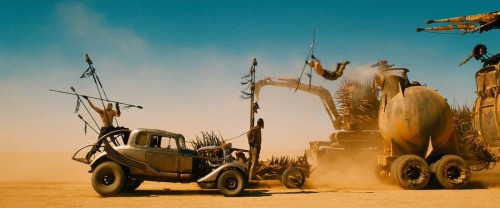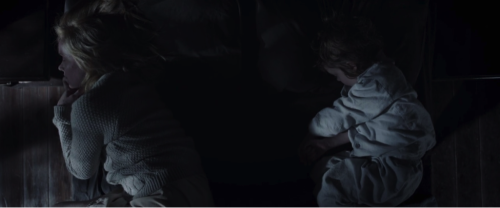This guest post by Elizabeth King appears as part of our theme week on Masculinity.
When I went to see Mad Max: Fury Road, I didn’t know anything about the film except that it was supposed to be “really, really good.” After leaving the movie theater, I was completely stunned. The film takes such a unique approach to a very common Hollywood action plot that it would be difficult not to be impressed with the creativity of Fury Road’s director, George Miller. Fury Road is also stunningly self-aware, and that alone makes it stand out in its genre. But the true creative genius is that the film includes all of the problematic, hyper-masculine core elements of action movies, but they are portrayed in such a way that audiences are not merely entertained by those elements, they also cannot help but to recognize them as problematic.
Hallmarks of a typical action movie are scenes and characters that include violence, destruction, bulging muscles, fire, fast cars, and attractive (but mostly irrelevant to the plot) women. Action movies revel in and glorify hyper-masculine imagery, particularly violence, and have little to no self-reflection regarding the destruction, havoc, and exploitation that results from uncritically embracing hyper-masculine values. Titles like Die Hard, The Matrix, and Terminator quickly come to mind as exemplars of this type of entertainment.
In Fury Road, oppressive violence and exploitation are personified in the legion of antagonists: the war boys and their villainous leader, Immortan Joe. Immortan is almost too perfect in this regard. As the evil dictator of the territory he occupies in a post-apocalyptic world, he demands more and more gasoline (which is in rare supply), while withholding water from his starved and sickly citizens. He also has a collection of women that he imprisons and uses for breeding purposes. In this single character we see some of the worst aspects of rampant hyper-masculinity condensed into one truly horrifying man.
What’s more is that Immortan Joe and his warboys all drive huge, emissions spewing, weaponized vehicles, designed to easily rip across their barren desert landscape and kill their enemies in many creative ways. They thrive off of consumption, exploitation of resources, and find glory in killing. They are (of course) all armed with excessively rigged-up guns, and when their war party of cars is assembled, the image is so on the nose that it is almost comical. There are entire scenes that are so overly masculinized that they become absurd.
But this is, in large part, the beauty of the film. Fury Road delivers all the high speed vehicles, bloodthirsty men, car chases, and explosions we want and expect in action movies, but these images are intentionally presented in such an extreme manner, rendering them absurd; the audience can’t help but have their exhilaration filtered through criticism. Fury Road is not escapist like so many other films in the action genre. On the contrary, it uses the spectacle of action tropes as a means of calling attention to the problems with those tropes.
The character of Max also fulfills many stereotypical masculine traits. He is stoic, quiet, a loner, and not afraid to wield a weapon. Much of his dialogue is grunting. While he demonstrates many masculine qualities, these traits are not pushed to the extreme limits like they are with Immortan Joe. In addition to being gruff and stoic, Max is also cooperative, level-headed, and willing to defer to the expertise and skills of women. Max’s masculinity is nuanced. It is the product of the state of the society he lives in, but he does not buy into the oppressive/ destructive narrative.
Max demonstrates that masculinity can embraced without it necessarily being brutish or a force force for destruction. Compared to Immortan and the warboys, Max’s character communicates that masculinity itself is not what creates oppression, but when the core features of traditional masculinity go unchecked and become dominant (a la Immortan Joe), it can only spell disaster.
Elizabeth King is a freelance writer based in Chicago, Ill. She is a feminist, environmentalist, and ice cream enthusiast. You can find her on Twitter @ekingc, and read more of her work on her website: www.elizabethcking.com.








